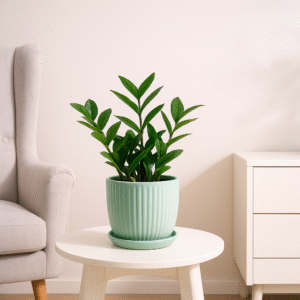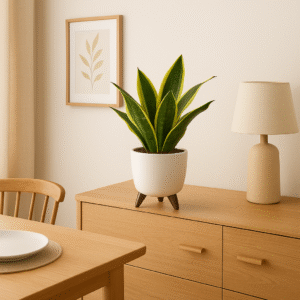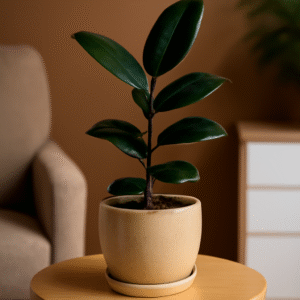Tomatoes are among the easiest and most rewarding plants to grow at home. Whether you have a backyard garden, a small balcony, or just a sunny windowsill, tomato plants can thrive with the right care. Not only are homegrown tomatoes healthier and tastier than store-bought ones, but they also add a touch of freshness to your daily meals.
At The Tarva, we believe every home deserves a little greenery and goodness—and what better way to start than with tomatoes? This guide will walk you through everything you need to know about growing tomato plants at home, from selecting seeds or seedlings to harvesting juicy red fruits.
Why Grow Tomatoes at Home?
Growing your own tomatoes has several benefits:
- Freshness: Pluck ripe tomatoes straight from your plant whenever you need them.
- Cost-saving: One healthy plant can yield kilos of tomatoes.
- Healthier: No harmful chemicals or pesticides—just natural, safe produce.
- Sustainability: Reduce your carbon footprint by growing food at home.
- Joy of Gardening: Nurturing a plant is therapeutic and fulfilling.
Step 1: Choosing Between Seeds and Seedlings
When it comes to growing tomatoes, you have two choices:
1. Growing from Seeds
- Best for those who want to experiment with different varieties.
- Requires more time, effort, and patience.
- Ideal if you plan to grow multiple plants and enjoy the complete gardening process.
2. Growing from Seedlings
- Perfect for beginners or busy gardeners.
- Less time-consuming as the first few growth stages are already taken care of.
- Easily available at plant nurseries and online stores like The Tarva.
👉 Beginner Tip: If this is your first time, start with seedlings for quicker results and less hassle.
Step 2: Picking the Right Tomato Variety
Not all tomatoes are the same. Some are small and sweet like cherry tomatoes, while others are large and juicy like beefsteak varieties. For Indian homes, popular choices include:
- Roma – Great for sauces and cooking.
- Cherry Tomatoes – Perfect for salads and snacking.
- Desi Varieties (Pusa Ruby, Arka Rakshak) – Heat-tolerant and ideal for Indian climates.
Choose based on your cooking style, space, and climate.
Step 3: Preparing the Soil
Tomatoes love well-drained, nutrient-rich soil. Here’s how to prepare it:
- Use potting mix enriched with compost or cow dung manure.
- Maintain soil pH between 6.0 and 7.0 (slightly acidic to neutral).
- Ensure good aeration—soil should be light and crumbly, not hard-packed.
👉 Pro Tip: Mix crushed eggshells or Epsom salt into the soil to boost calcium and magnesium, preventing common issues like blossom-end rot.
Step 4: Planting Tomatoes
- In Pots: Use containers at least 12-18 inches deep with drainage holes.
- In Ground/Bed: Plant seedlings 18–36 inches apart for proper airflow.
Steps for planting:
- Dig a deep hole—tomatoes like to be planted deeper than most plants.
- Remove lower leaves from the seedling.
- Place the plant in the soil until just the top set of leaves is visible.
- Cover with soil, press gently, and water thoroughly.
Step 5: Watering Your Tomato Plant
Tomatoes need consistent moisture but dislike soggy soil.
- Frequency: Water 2–3 times a week in summer; daily for potted plants.
- Time: Best to water early morning.
- Technique: Water at the base, not over the leaves, to prevent fungal diseases.
👉 Pro Tip: Mulch the soil with dry leaves or straw to retain moisture and reduce weeds.
Step 6: Fertilizing for Healthy Growth
Tomatoes are heavy feeders. For strong, fruit-bearing plants:
- Add organic compost or vermicompost every 2-3 weeks.
- Use a balanced NPK fertilizer (slightly higher in phosphorus and potassium).
- Avoid overfeeding with nitrogen—it will give you leafy plants but fewer fruits.
Step 7: Supporting & Pruning Tomato Plants
- Use stakes, cages, or trellises to support the plant as it grows tall.
- Prune regularly by removing suckers (small shoots that grow between main stems).
- Keep the bottom 6-8 inches free from leaves to improve airflow and prevent diseases.
Step 8: Protecting Against Pests & Diseases
Tomatoes are prone to pests like aphids, fruit borers, and fungal infections.
- Natural Pest Control: Spray neem oil or soapy water solution.
- Companion Planting: Grow basil or marigold near tomatoes to repel harmful insects.
- Hygiene: Always water at the base and avoid wetting leaves.
Step 9: Harvesting Tomatoes
- Tomatoes are ready to harvest when they turn deep red (or variety-specific color) and feel slightly soft when pressed.
- Use scissors or garden shears to cut them, leaving a short stem attached.
- Regular harvesting encourages more fruit production.
How to Grow Tomatoes in Indian Homes (Special Tips) 🌞
- Climate Considerations: In India, tomatoes can be grown almost year-round, but avoid peak monsoon and extreme summers.
- Balcony Gardening: Choose compact varieties like cherry tomatoes if space is limited.
- Terrace Gardening: Use grow bags or large pots for better yield.
- Organic Growing: Stick to compost, cow dung manure, and neem oil sprays for chemical-free produce.
Final Thoughts
Growing tomatoes at home is one of the easiest and most satisfying gardening experiences. With just a little care, you’ll be rewarded with a steady supply of fresh, juicy tomatoes for your curries, salads, sauces, and chutneys.
Whether you’re a beginner or an experienced gardener, following these steps will ensure your tomato plants thrive. At The Tarva, we’re here to help you make your gardening journey simple and enjoyable—bringing greenery and goodness right to your home.
So why wait? Pick up your seeds or seedlings today and start growing your own little tomato farm at home.




